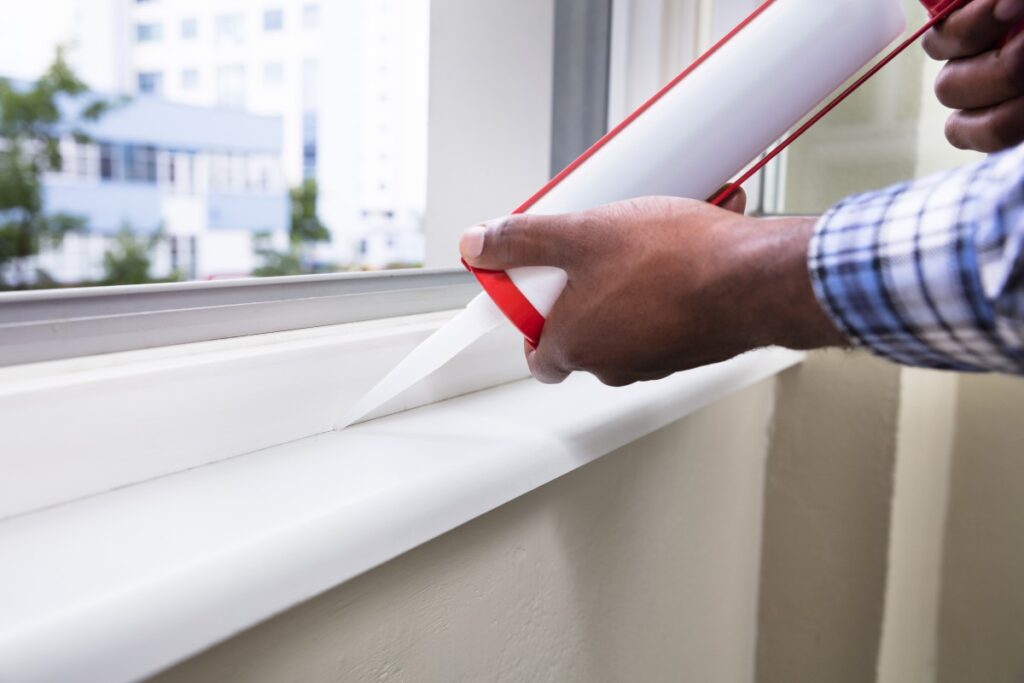
Your home is your sanctuary, a place of comfort and security. But like any fortress, it needs regular maintenance to withstand the elements and keep its inhabitants safe and sound. One often-overlooked yet crucial aspect of this maintenance is house caulking. While it might seem like a minor detail, proper caulking can significantly impact your home’s energy efficiency, structural integrity, and overall comfort.
What Exactly is House Caulking?
Essentially, caulking is the process of sealing gaps and joints in your home’s exterior and interior using a flexible sealant. These gaps can occur between various materials, such as siding and trim, windows and walls, or even tiles in your bathroom. The caulk acts as a barrier, preventing air and water infiltration, which can lead to a host of problems.
Why is House Caulking So Important?
Let’s dive into the myriad benefits of maintaining proper caulking around your home:
- Energy Efficiency: Leaky gaps around windows and doors allow conditioned air to escape, forcing your HVAC system to work harder and driving up your energy bills. By sealing these gaps with caulk, you can significantly improve your home’s energy efficiency and save money on heating and cooling costs.
- Water Damage Prevention: Water infiltration is a major threat to your home’s structural integrity. Leaky caulking can allow water to seep behind siding, around windows, and into vulnerable areas, leading to rot, mold growth, and costly repairs. Proper caulking acts as a waterproof barrier, protecting your home from water damage.
- Pest Control: Gaps and cracks provide easy access for insects, rodents, and other pests. Sealing these entry points with caulk can help keep unwanted critters out of your home, creating a healthier and more comfortable living environment.
- Improved Comfort: Drafts and cold spots can make your home feel uncomfortable, especially during extreme weather. Caulking helps eliminate drafts, creating a more consistent and comfortable indoor temperature.
- Enhanced Aesthetics: Worn or cracked caulk can detract from your home’s curb appeal. Fresh, clean caulking can enhance the appearance of your home and make it look well-maintained.
- Increased Lifespan of Materials: By preventing water and moisture damage, caulking helps extend the lifespan of your siding, windows, and other building materials, saving you money on costly replacements.
Where Should You Caulk?
Identifying areas that need caulking is crucial. Here are some key locations to focus on:
- Around Windows and Doors: These are prime areas for air and water infiltration.
- Where Siding Meets Trim: Gaps in these areas can allow water to seep behind the siding.
- Around Pipes and Wires: Any penetrations through exterior walls should be properly sealed.
- Expansion Joints: These are designed to accommodate movement in the building materials, but they still need to be properly sealed.
- Bathroom and Kitchen: Areas prone to moisture, such as around bathtubs, showers, sinks, and backsplashes, require regular caulking maintenance.
- Foundation Cracks: Small cracks in the foundation can be sealed with caulk to prevent water intrusion.
Choosing the Right Caulk
Several types of caulk are available, each with its own specific properties and applications. Here are a few common types:
- Acrylic Latex Caulk: This is a versatile and affordable option suitable for general-purpose use. It’s easy to apply and clean up with water.
- Silicone Caulk: Known for its flexibility and water resistance, silicone caulk is ideal for areas exposed to moisture, such as bathrooms and kitchens.
- Polyurethane Caulk: This durable and flexible caulk is suitable for outdoor applications and areas subject to movement.
- Butyl Rubber Caulk: This type of caulk is very durable and is often used for sealing metal surfaces.
DIY vs. Professional Caulking
For small caulking jobs, such as sealing gaps around windows or doors, you may be able to handle it yourself. However, for larger or more complex projects, it’s best to hire a professional. A professional will have the experience and expertise to properly prepare the surfaces, choose the right caulk, and apply it correctly.
Tips for Successful House Caulking:
- Prepare the Surface: Clean the area thoroughly and remove any old caulk or debris.
- Choose the Right Caulk: Select a caulk that is appropriate for the specific application and materials.
- Cut the Nozzle at a 45-Degree Angle: This will create a smooth and even bead of caulk.
- Apply the Caulk Smoothly: Use a steady hand and apply even pressure to create a consistent bead.
- Smooth the Caulk: Use a wet finger or a caulking tool to smooth the caulk and create a clean finish.
- Allow the Caulk to Dry: Follow the manufacturer’s instructions for drying time.
- Inspect Regularly: Check your caulking regularly for signs of wear and tear, and re-caulk as needed.
Investing in proper house caulking is a smart way to protect your home, save money, and enhance your comfort. Don’t let this essential maintenance task fall by the wayside. By taking the time to seal those gaps and joints, you can ensure that your home remains a safe, comfortable, and energy-efficient sanctuary for years to come.





